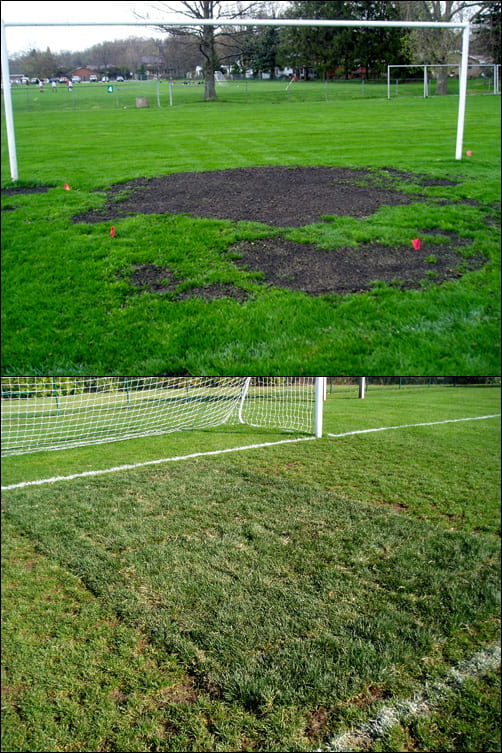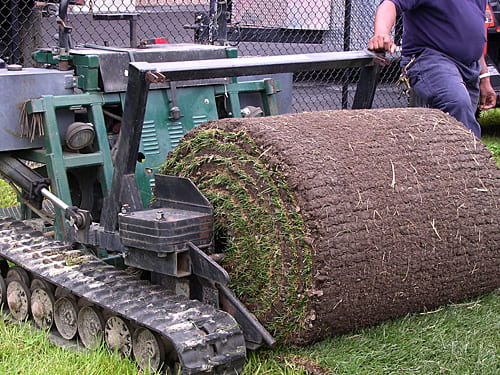
When there is not time to wait for grass to establish and turf cover is needed sod (mature turf cover) can provide quick cover on heavily worn areas such as goal mouths. Sodding can be done any time the ground is not frozen.
Start with good quality thin-cut sod or thick-cut sod that was grown in soil similar to the existing soil. Thin-cut sod, which usually has about ¼ – ½” of soil, is easier to handle and will root faster than thick cut sod.
Thick-cut sod can have as much as 1-2” of soil which makes it much heavier to handle and contributes to higher trucking costs. However, once laid properly it is ready for play immediately.
Consider tall fescue sod
If you are expecting high traffic and will not be able to provide regular fertilization and irrigation after establishment consider a tall fescue dominated sod (at least 90% TF) with some Kentucky bluegrass to help knit the sod together.
Be sure to prepare the soil before the sod arrives! If you have a clay subsoil consider adding a high quality compost (yardwaste or biosolid). Till compost into 4-6” of soil and properly grade and level the area to maximize surface drainage

Sod should be protected during transportation. Remember sod that is left too long on the truck runs the risk of heating up due to respiration by both the turf and microorganisms. The center of the sod stack could reach very high temperatures causing turf damage or death. So avoid leaving sod in the sun and place it in the shade or be prepared to lay the sod when it arrives.
Lightly moisten the soil if the soil is dry at the time of sodding. The sod should be placed in a brick-like pattern, staggered so the edges do not line up. Minimize the number of edges that are exposed that could lead to desiccation. A light rolling could be helpful at this time to eliminate any air pockets. Watering is key now and important in promote rooting. Check to make sure that the watering has gone deeper than just the surface and has thoroughly wetted the underlying soil. Keep the soil moist and periodically check on sod to see how it is rooting. Avoid traffic until the sod is rooted which could take 1 week or so. To avoid layering problems once the turf is rooted core cultivate and remove the cores. Mowing can begin once the area is firm enough to handle traffic. A light application of nitrogen (½ lb./1,000 sq. ft.) may be beneficial 3-4 weeks after the sod has been laid.


